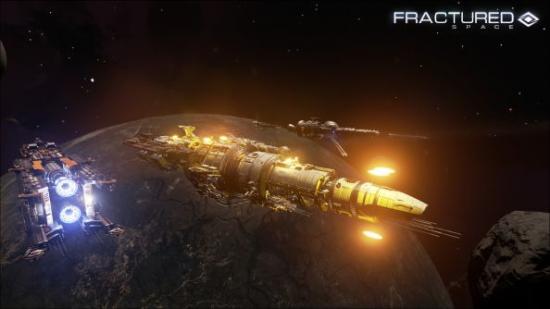Fractured Space is a game about space battles. Not flighty scuffles between sci-fi spitfires, but the slow-mo ballet of kilometre-long capital ships. Its inspirations are the climactic battle of Wrath of Khan; the Colonial Battlestar against the Cylon Basestar; Imperial Star Destroyers vs the Rebel Alliance.
If Edge Case Games are going to pull it off, it’s going to require both enormous scale and incredible detail – enough fidelity for players to be able to target a specific turret among dozens, or take out an enemy’s weapon systems in one, well-placed shot. Here’s how they’re doing it in Unreal Engine 4.
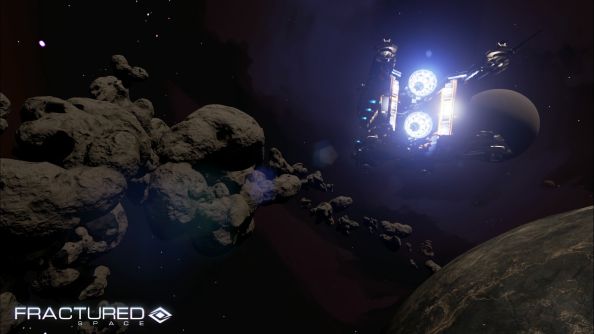
Last year, the team behind Fractured Space released Strike Suit Zero – a shooter from the opposite perspective, about little spaceships making big targets of the leviathans.
The Guildford developers (then working as Born Ready Games) put Strike Suit together in an engine they’d intended to build on in future games. But once Epic announced plans to make Unreal Engine 4 available as a $19 subscription at GDC this year, they knew the game was up.
“One thing that I remember being in our heads at the time was that anybody is going to be able to produce amazingly good-looking games, and we need to able to compete,” said Edge Case CEO James Brooksby.
“So we went, hold on a minute, we’ve got quite a large road map of engineering ahead of us to bring our own technology up to the next level, and that has a price tag associated with it which is not insubstantial. We just couldn’t ignore it.”
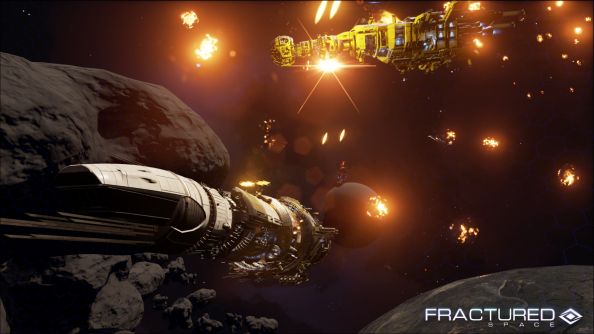
The timing clinched it. The developers had just finished porting Strike Suit Zero to consoles, and faced an uphill hike to remodel their tech around contemporary PCs. Instead, they called up their Epic contacts after GDC to find out how they could get the inside track for UE4.
“They said, ‘Well, just pay 19 dollars and you can have it now’,” recalled Brooksby. “So we just did exactly that.”
Work began on Fractured Space in the middle of summer under a team of “twenty-odd”. Three months later, they had a build fit for Steam Early Access. It was a validation of their choice.
“We were able to hit the ground running pretty damn quick, and the technology allowed us to do that,” said Brooksby. “We wouldn’t have gotten there so fast if we had used our own tech, for sure.”
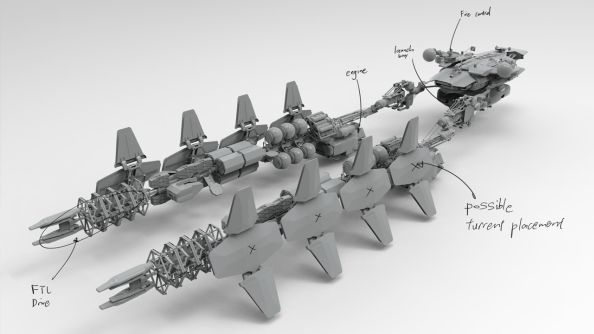
More than half of the team had experience with Unreal – creative director and chief technical officer included – and the artists in particular were able to get straight to work. Which was crucial: if Fractured Space’s sense of scale was going to convince, it had to come from them.
The void doesn’t provide easy references for size. So from concept art onwards, Edge Case’s art team committed themselves to thinking through “how a ship feels big and what that means”. From a technical standpoint, that meant working to tie Fractured Space’s models into the few “recognisable and believable structures” in the environment.
“Modern shaders, surfaces and so on mean that the light looks more natural when it’s being reflected off the world onto the ships,” said Brooksby. “Unreal didn’t make things feel big or allow us to do big, but it made scale and believability easier.”
Like CCP’s Eve Valkyrie team, Edge Case have also had to grapple with Dougal syndrome – the natural human struggle to tell a small-but-near object from a large-but-distant one.
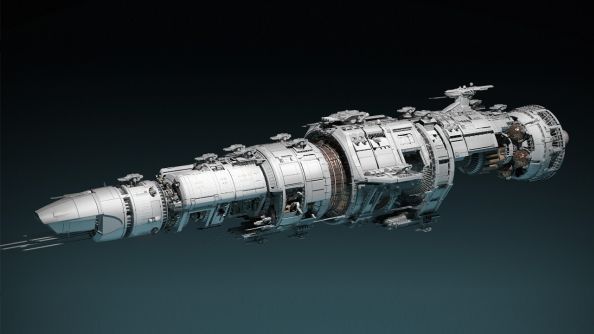
“It’s a problem that we’ve encountered in the past and really that comes down to putting a lot of thought and time and effort and detail into your big ship models,” said Brooksby. “Because one of the things that people recognise is that when something big it has a lot of detail.
“That is down to the skill of the artists, and then the engine of course allows you to put that detail into the world.”
One of UE4’s strengths, says Brooksby, is the array of available tools that allow designers to have multiple instances of the game running on different screens at once. They’ve enabled Fractured Space’s team to compare the feel and scale of objects in their world side-by-side. The designers can tweak shape parameters, and the artists fiddle with lighting and something more intangible – “how the atmosphere makes things feel sizeable”.
“If you ask the lead artist, he’ll say that we’re nowhere near finished,” said Brooksby. “There’s so much more we can do with the surfaces and the lighting and the lights on the ships and all of these kind of various things to do to really, really, really enhance that sense of scale.
“I think we’ve barely scratched the surface, but the reaction we’ve had so far has been very good.”
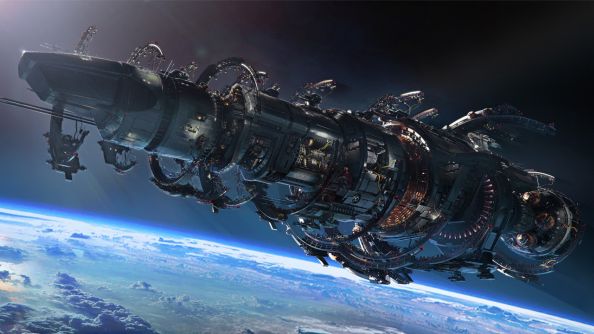
Development has sped along in Early Access in part thanks to UE4 Blueprints, the simplified programming tool which enables non-engineers to implement otherwise complex systems – and which Edge Case have used “enormously”.
“So much of our work is in Blueprints,” said Edge Case COO Dylan Beale. “There’s some hard code in C++ for creating abilities or weapons, but everything is then exposed in a Blueprint for a designer to work with.”
That means a coder can write just enough C++ to make a blue laser, and the rest – its length, range and degree of blueness – can be handled by others on the team.
“I think it’s paying dividends,” said Brooksby. “The fact that the tools are there and the engineers are in such good stead meant that we were able to produce something really quickly.”
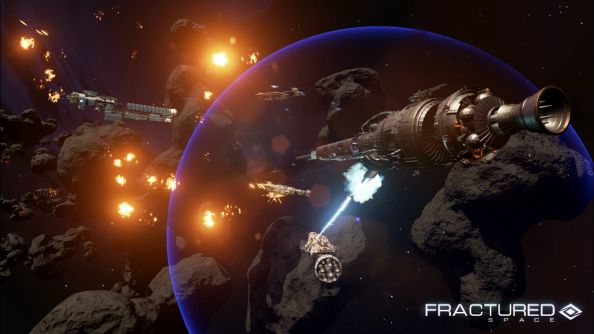
That same development speed, however, has pushed Edge Case out into uncharted regions of space. They’ve become one of the first developers to release a PvP game in Unreal Engine 4 – beating even Epic’s own rebooted Unreal Tournament to the arena. That means they can’t lean on example multiplayer setups left behind by one of the most accomplished multiplayer developers in the world.
“When you got Unreal 3 you would basically get Unreal Tournament and you could start modding it, if you wanted to,” said Brooksby. “With Unreal 4 they’ve left it more open.”
But in moving from the single player Strike Suit to their multiplayer debut, Edge Case have been helped by UE4’s “amazingly solid” networking capability – and reassured by Epic’s newly open methodology. If the devs need to push out balance changes in the middle of the night, they know they’ll be able to.
“We are updating all the time and we needed an engine that could keep that pace up, for sure,” said Brooksby. “Not knowing when the next version would come would have been a nightmare for this kind of project and certainly would have put us off.”
“We’ve got quite a complicated and convoluted build process now with various different versions being built all the time, so our development is going to slow down a little bit,” added Beale. “But Unreal are going at a hell of a pace, which is great for us because it gives us more shiny bits to turn on and off in the coming months.”
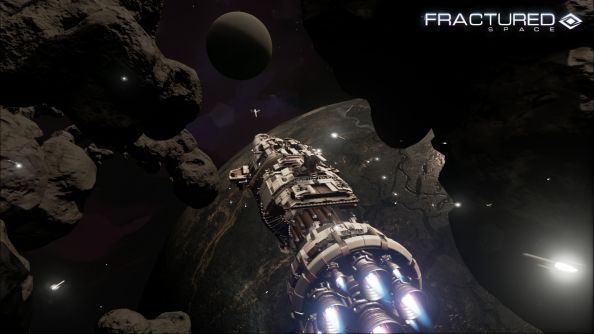
In fact, Edge Case are struggling to keep pace with the speed enhancements, fixes and new features Epic keep chucking at them (“all sorts of stuff getting the artists far too excited for my liking”).
“We were actually joking that they were going to have to start slowing down on their numbering,” said Beale. “We think we should start with the .01s.”
“We’ll be at Unreal 5 by Christmas at this rate,” nodded Brooksby.
A day after our chat, Epic launched Unreal Engine 4.6. Edge Case’s artists must be over the perfectly-scaled moon.
Fractured Space is out now on Steam Early Access. Unreal Engine 4 development is available to anyone for a $19 monthly subscription fee.
In this sponsored series, we’re looking at how game developers are taking advantage of Unreal Engine 4 to create a new generation of PC games. With thanks to Epic Games and Edge Case.
